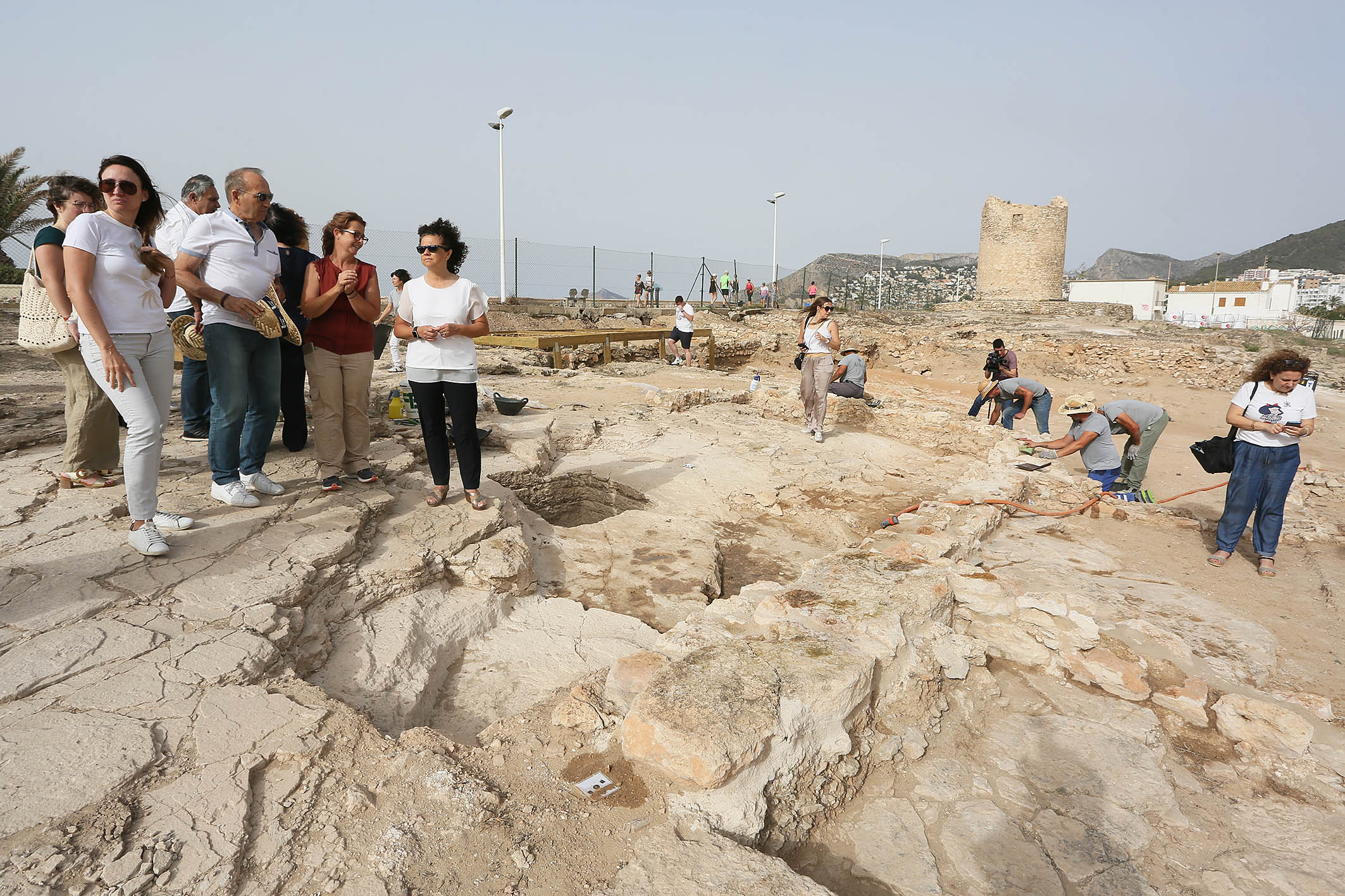
The Member of Parliament for Architecture, Carmen Sellésvisited this morning Els Banys de la Reina de Calp to supervise the state of the works, which will allow the site to be opened to the public thanks to a grant from the European Commission. 440,000 euros from the Diputación de Alicante90% of the total budget.
The adaptation and implementation of Phase A of the Master Plan, which began in April and will last until October, is a further step in this process. ambitious project aimed at safeguarding the enclave and promoting it as an outstanding tourist attraction of international value. Accompanied by the local mayoress, Ana Salaand by the Director General of Cultural Heritage of the Generalitat Valenciana, Pilar TébarSellés reaffirmed "the commitment of the institution and the work carried out by the Architecture Department and the MARQ Foundation to promote and recover the important cultural and historical heritage that we have as a province in order to make it known to the public".
The deputy wanted to give special thanks for the work of both the Architecture area of the provincial institution, with the director Rafael Pérez as well as the team of archaeologists and municipal technicians to enhance "one of the bastions of the Roman period on the Spanish Mediterranean coast, considered a unique treasure in the province for its uniqueness and monumentality". For her part, the mayoress of Calp thanked the support received from the Provincial Council to move forward with the long-awaited project and make this project a reality. project for a visitable archaeological park.
The Master Plan, which began to be drawn up in 2019, encompasses the actions necessary for the consolidation of architectural remains of the area and its rehabilitation as a site museumin addition to the modalities of management, economic and sustainability study.
The site occupies a large tract of landclose to the four hectares. To the nurseries in the area -which supplied the Roman villas with fresh fish - are joined by Roman remains attached to a wide range of chronological sequence from the 1st to the 7th century A.D.. All the buildings that have appeared to date formed a structured grouping in antiquity, dotted with residential, leisure, industrial and religious buildings. There are also more modern elements such as the Morelló Millfrom the 19th century, or the tuff quarry located on the coastal strip.
